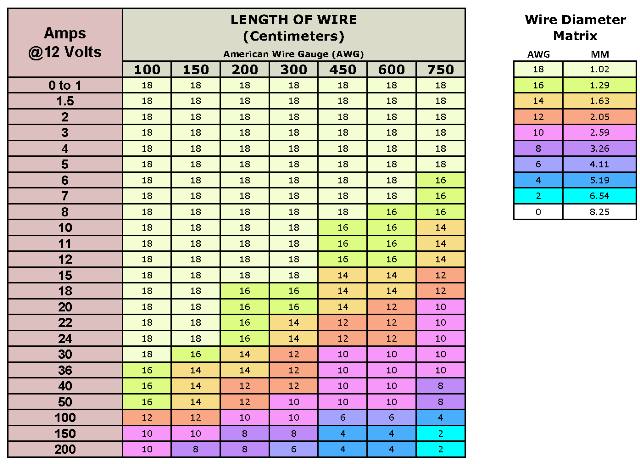

If we use the 80 rule, which says wires should not carry more than 80 of their rating, 80 of 65 is 52 amps, which is more than adequate to run our hot tub. This is the minimum wire size required by the NEC. A 6 gauge wire can safely handle up to 65 amps of current at 167F. The wire size for a 50 amp sub panel with aluminum wire is 4 gauge.

Outdoor circuits, however, are often quite long and the voltage drop can be significant. Tips to Calculate 50 Amp Hot Tub Wire Size. Voltage drop occurs in any wire run, but it is rarely a problem with indoor wiring, where the distance from the circuit breaker panel to the end of the circuit is usually relatively short. However, if you require a 200 amp feeder wire for longer distances, the NEC recommends increasing the wire size by 20 per 100 feet from the circuit breaker panels. However, if the cable run is long, as underground runs often are, you may need to increase the wire size to account for voltage drop-a loss of voltage in the circuit caused by the natural resistance in the wires. According to the NEC Table 310.12 guidelines, for a 200 amp service, it is advised to use either a 2/0 AWG copper wire or a 4/0 AWG aluminum wire for distances up to 50 feet. Sizing the wires, or conductors, for an underground cable is no different than sizing for other household circuits and is typically based on the total load, or electrical demand, of the devices on the circuit. However, this is not an absolute rule, and you can always choose a bigger wire to ensure the wire won’t be running in barely proper working condition. The NEC has also developed a wire gauge chart to help avoid electric. The appropriate 50 amp wire size is 8 gauge aluminum or 6 gauge copper. If the wire length is 100 feet or above, you should consider a wire gauge, one level up, to prevent voltage dropfor instance, a 4-gauge copper wire for 50 amps at 100 feet. The best size for a 50 amp rv service is 6 AWG. You can use a 4-gauge aluminum wire for 50 amps. Fortunately, this is a specific wire size: 6-gauge. A 6-gauge copper wire is a standard for 50 amps. Such an installation is typical when running a circuit to an outdoor location, such as a garage, shed or other outbuilding, or to a yard light or water feature. For many 50 amp welders, you won’t need to depart too much from what building codes recommend. The n gauge wires cross sercional area A n in kilo-circular mils (kcmil) is equal to 1000 times the square wire diameter d in inches (in): A n (kcmil) 1000×d n 2 0. However, if you’re using the circuit for a long time, you may want to consider using a smaller-gauge wire. This wire size is recommended by the American Wire Standard, and it’s suitable for use with appliances that draw 30 amps of current. Underground wire for a residential circuit usually is installed with underground feeder (UF) cable, which is rated for outdoor use and direct burial. For most 220 30 amp circuits, you should use ten-gauge wire. The Spruce Home Improvement Review Board.


 0 kommentar(er)
0 kommentar(er)
